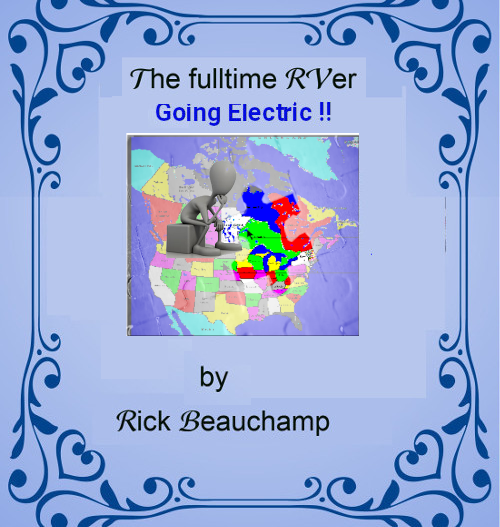

The Canadian and United States of America governments want North America to be carbon zero by 2050. It is a major undertaking that will involve every sector, every person, every business. In a nut shell, we must migrate away from use of fossil fuels and coal for energy production, home heating to natural gas, propane, and renewable resources such as wind, solar, hydro. Our transportation sector must migrate away from fossil fuels to EV-vehicles and Solar-EV-vehicles.
Back in 1958, 150 nations met at a science conference on climate change and it was made public that unless we end coal production and use by 2000, and fossil fuel use by 2030 our planet is doomed. All nations agreed. It’s now 2024 and the predictions of the effects of climate change have come to pass. We have weather patterns shifting, wildfires more severe than ever, droughts, hurricanes, tornadoes, earthquakes all on the rise. One local leader took a stand to mandate all coal production and use would end by 2030. It was short lived, the farmers teamed with the petrochemical industries and replaced that leader with one that promised increase coal mining and use and more funding for fossil fuel resources. Next the leader asked the public to fight back against the government carbon levy on primary polluters. As of this writing, this head in the sand leader is taking the Canadian government to court to force an end to plans to be carbon free by 2050 saying the power grid can’t handle the load.

This is a highly fitting rendition of the Calgary C-train ramming the head in the sand leader where it counts.
I just wish the leader actually was a leader instead of “if I can’t see it , it can’t see me”
These are rather dated being from 2003.
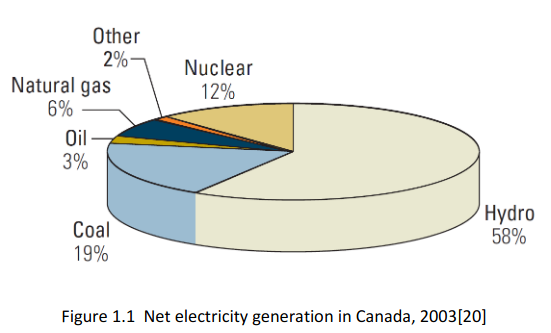 We
get 65% of our power from clean sources, 12% from clean sources if we
can eliminate nuclear waste. Now this is pretty good, but, and there
is always a but, 21% is dirty as it counts for 57% of our carbon
footprint.
We
get 65% of our power from clean sources, 12% from clean sources if we
can eliminate nuclear waste. Now this is pretty good, but, and there
is always a but, 21% is dirty as it counts for 57% of our carbon
footprint.

A look at home heating and transportation reveals 68% comes from dirty fossil fuels that are high contributors to climate change.
This comes from the petroleum sectors own accounting.

It is interesting that it almost matches exact to the contributions to green house gas (climate change)
Hmm, I Think we have another plot for a Hollywood movie here. With leaders sticking there heads in the sand and others saying climate change is a myth…
A Plan to save our planet
Visitors from a trillion light years away have come to investigate why the blue planet in the far off galaxy circling a yellow sun has turned a dark gray. As they approach, they see all foliage is dead, waters are brown with waste, most land masses are covered in heaps of discarded garbage, and skeletons of all shapes and sizes are everywhere.
The team starts putting together the events that lead to this catastrophe. They conclude that Idiocracy has claimed yet another world. The people took the easy path placing trust in leaders to handle life’s management. The leaders of different factions spent their time forging plans to deal with events that face the planet and undo the plans of previous leaders to appease the people so they wouldn’t be replaced. The visitors shake their heads and leave with regrets that they should have come sooner.
Okay, so the governments want to be green by 2050. Well back in the 1950’s we repurposed, reused, repaired everything. In the 1970’s we decided to ship our raw materials to the orient at a very low cost and have them make what we need or want at a cheaper price and quality. By the 1980’s our land fills went from basically organic waste to waste of all kinds. Auto wreck yards which use to break down cars and trucks for parts reuse now got tonnes of vehicles with more and more unusable plastics.
We have transitioned from reuse to throw away society.
The government announced all vehicle must be electric or use a renewable energy with zero carbon footprint by 2040. That is 16 years from now that all must be electric. To make this happen, all New vehicle sales must only be electric by 2030 and all nun-electric used vehicle sales must end by 2035. Some head in the sand leaders want to stop this to protect their high polluters who only care about profits, and fund the campaigns of head in the sand leaders.
From Stats Canada and Consumers affairs USA we get:
“The total number of road motor vehicles registered in Canada was 26.3 million in 2022, edging up 0.3% from 2021. Light-duty vehicles accounted for 91.7% of total registrations in 2022, with multi-purpose vehicles surpassing passenger cars for the first time as the most common vehicle type in Canada.”
“In 2022, there were 283,400,986 registered vehicles in the United States — 278,870,463 private and commercial vehicles, and 4,530,523 publicly owned vehicles. According to the 2021 U.S. Census Bureau, 91.7% of U.S. households had at least one automobile, and over 21% own three or more vehicles.”
One study from 2016 says Canada has an estimated 15% of registered vehicles in use that should not be allowed on the road due to mechanical deficiencies. So this move to be green is potentially a good thing.
At 0.3% growth we could see 152.5 million vehicles by 2040 in Canada and 1,643 million vehicles in the USA. Imagine that, 1.795 billion vehicles scrapped by 2040 to be replaced by 1.795 billion electric vehicles. If we could convert ICE (Internal combustion Engine) vehicles to EV using 2 conversion shops per province, territory, or state that is 226 conversion shops running full out for 16 years. Each shop needs to handle 7,942,488 conversions per year, 21,761 per day.
As you can see that is impossible figures. As in stands, an internet search found several sources that say 1.6 million vehicles are scrapped per year in Canada and 13 – 15 million in the USA. Vehicle sales in Canada come in at 1.8 million of which 86,000 are electric or hybrid. Scrapped EV vehicles in Canada amount to about 10,000 a year. So we are seeing 0.6% of scrapped vehicles are EV and 4.7% sales of EV. The wreckers/ recyclers are good at breaking down ICE vehicles and in general process about 45% of yearly scrapped vehicles. When the EV’s come in they are not dealt with since it requires special training to handle battery packs even if undamaged. The biggest part of the problem is that Insurance companies really operate like cavemen. An EV experiencing even minor damage is usually written off because our automotive shops have no clue how to check electric systems or deal with lithium batteries in pack forms.
In a real sense, when you are talking of a pack 3” x 48” x 48” to 96” weighing 800 lbs to 2500 lbs with 400v @ 200A to 600A it scares mechanics and insurance alike. Yes the packs can be broken down and recycled to make new packs but fewer than 1% are recycled.
So where do we stand:
1.6 million ICE vehicles and 10,000 EV’s per year scrapped in Canada
0.76 million ICE vehicles per year get properly recycled.
10,000 EV’s scrapped and just stacked out of the way.
1.8 million vehicle sales per year with 86,000 being EV
In 6 years only new EV’s can be sold but used sales can be ICE (trade-in values drop)
In 11 years all vehicle sales must be EV (trade-in values go to 0)
In 16 years a potential 1,795 million vehicles will be EV.
We need specialty EV dismantling shops to deal with the battery packs, Motors, Inverters, charge systems and dash computers. The regular wrecker / recyclers can deal with the rest.
Insurance companies need to come into the 21st century.
Vehicle owners will be on the hook for costs to go EV and the banks will likely be like Insurance companies with heads in the sand.
What can we expect?
Petrol-chemical exploration and processing will have down turns in need.
Gas stations must adopt becoming charge stations
ICE mechanics will be needed to remove engines and transmissions for recycling.
Trained Inspectors will be needed to access vehicles for road worthiness.
The automotive industry will need to get on board with new battery Pack standards which I will explain latter.
Provinces and states that rely on petroleum revenues have to embrace new technologies and business revenues such as:
Solar Panel makers
Battery Pack dismantle-rs
Gcell makers
Motor makers
Vehicle conversion facilities
Electronic control system makers
What can we hope for?
Government support for new industries (which they told me of 9 different programs available to assist with new business financing and mentoring)
EV Tax free savings plan
Grants or low interest loans for vehicle conversion or trade-in for converted vehicle for low income individuals.
Incentives to choose EV over ICE.
Let us talk a bit about Battery Packs and how the automotive industry does it wrong. Currently Battery Packs are related to Vehicle class (small medium large car, small medium large truck, Heavy Truck). The packs range from $5,000 to $50,000. Pack size and subsequent weight is the biggest problem with poor planning coming in second. Any first year electronics student knows batteries in series increase the series voltage and batteries in parallel increase the Amperage. This is true even if the batteries are far apart.
Now what if I told you that walk into your automotive supplier and buy a replacement Gcell for about $1200 instead of doing a whole pack for $5000 to 50,000. In fact splitting the Pack into 2 banks of 8 Gcells you can charge half the pack while you drive and swap the halves when one half has depleted. Wouldn’t it be nice to also recharge without plugging in while you shop, or work your job.
I have vehicle conversion books I have written that proves all we need is the industry to adapt so that Gcells are 48v @ 42A, 48v @ 84A, and 48v @144A. Where a 12v lead acid battery is 85 lbs and 8” x 9” x 6” with 12v @ 65A the Gcells would be about 10” x 10” x 6” at 48v @ 42A 34 lbs, 10” x 10” x 12” at 48v @ 84A 68 lbs, 10” x 30” x 6” for 144A @ 48v 115 lbs.
8 x 48v Gcells in series gives 384v to supply the inverter system and yes this has the authorities worried. Amps is what kills. 0.1 amps at 50v will kill if you remain connected for about 10 minutes with the leads flowing the charge across your heart (+ in one hand - in the other). As voltage raises above 50v the time connected reduces. The body has reasonably high resistance so lets say 1,000 ohms ( R ) so with the formula 10v/1,000 = 0.01 amps, but at 100v, 100/1000 = 0.1 amp and your dead in 2 to 3 seconds. I wish they used real engineers on councils because they say 12v batteries with 65A and 1500 cold cranking amps are safe because the 1500A is only used for starting an ICE vehicle and run current is 60A. Then they say a 384v pack voltage at 42A or higher is dangerous even though for the first 1/60th of a second there is 250A to start the motor turning but up to 10A run current at full speed. A simple high power cutoff switch assures reasonable safe servicing of packs. The powers that be allow extension cords that can fray in time and expose users to electrocution.
Now what is needed to covert your ride:
Inspect vehicle to make sure it is road worthy. [2 hours]
Tires not worn out
axles, CV joints, U joints in good condition
Steering ok
Brakes totally functional
Body not rusted out or missing parts
Glass, door seals, trim in fair condition
If the vehicle passes Mechanic removes Engine, Transmission, exhaust, Catalytic, Engine support systems, fuel, and tank for safe disposal. [ 4.5 hours]
If the vehicle does not pass the Mechanic does repairs then does 2. or sends you home
Engineer plans motor mount requirements, drive line adapters, Pack placement, Solar placement [1 hour]
Welder / Engineer do fittings [2 hours]
Motor Mechanic installs motor, drive adapters, Inverter [2 hours]
Electronics Engineer and Detailer plan dash control center changes [4 hours]
Battery fitter installs battery banks [1 hour]
Solar Installer installs Solar array [1 hour]
Electronics technician wires everything up and tests the [2 hours]
19 ½ hours labor @ $150 per hour = $2900 but because many tasks can be going on at once it can be done in under 8 hours. Motor estimate is $5000, Drive adapter $300, Electronics $1200, Solar $900 for a base price of $10,000 plus choice of Battery packs. Gcell costs are expected to be less than my proto type estimates. Choices are 1 bank (half range) for $8000, 2 bank full range $16000 suitable for small compact car to mid size car for $18000 to $26,000. Truck from $26000.
The one thing that no-one in government thinks about is the RV industry. Once you have slaved all week maybe you want to grab your luxury coach and go camping. The motorhome is another gas hog. There won’t be gas for them either come 2040. What about your motorcycles, atv’s, motor boats?
So while I have done considerable work on EV and ran All Tech Development from 1975 to 2004, what I need is forward thinkers to take what I have developed and be the entrepreneurs of the future. It can be a very lucrative business from many view points. Where can you find a market for a potential of 1.7 billion units over 16 years. Right now you have no competition.
Maybe you don’t need a vehicle and can do with a Solar electric Tricycle for $3000 total with range of 100 miles per charge.

50 kph 100 mile range expandable to 500 kms large 30” x 36” basket, side storage lockable and can be pedaled or driven under full power.
This one is under construction.
My books go into detail on conversion of many types of vehicle.
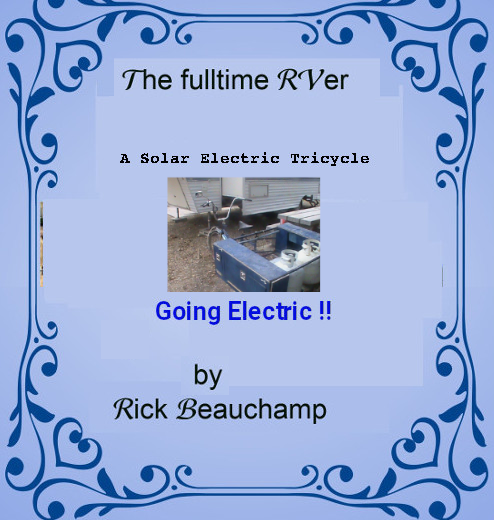
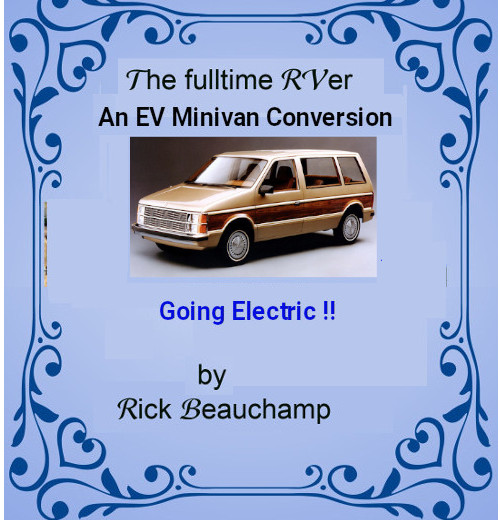
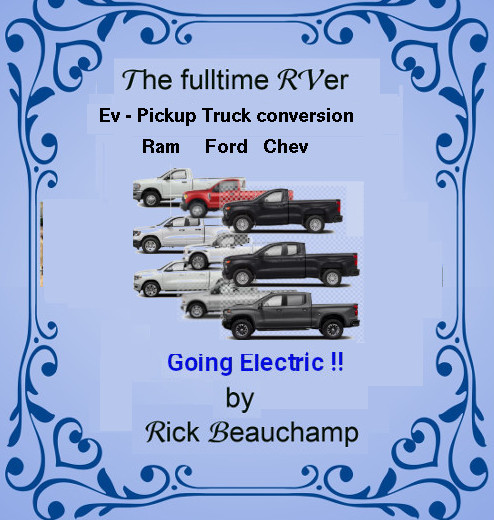
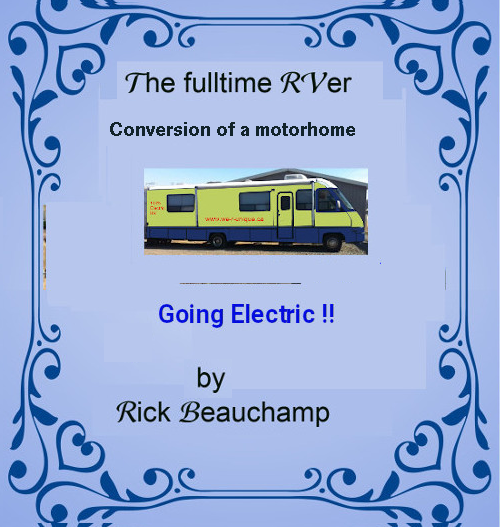
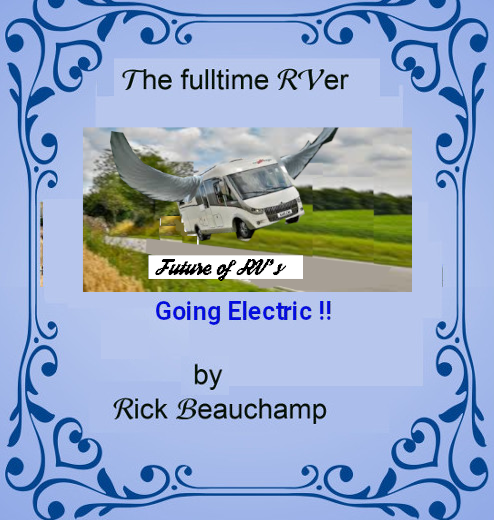
The end is just the beginning
We can make our target goals. What ends is coal production and use, fossil fuels used in vehicles, and poor management of recycling. What we gain is a greener planet with a happy economy.
I don’t say it will be easy, for it will be challenging to convince those deep routed in their programmed beliefs that all that matters is to keep things the same. Even here where I live, the people are telling me that we have to keep the oil barons happy because they make the Alberta economy strong. The underlying pattern is that people are frightened by change. In the 1800’s news articles called the electric light the devils work “Scientists are playing god, and if people don’t need oil for their lamps our society will perish”. We will adapt just as we did 1000’s of times in the past.
This paper has outlined many steps to a greener future. Pun intended. We will meat climate goals, which are green, create new industries, which is green, make money through commerce which is green, stop polluting which makes the planet green.
To Summarize:
1) An REVSP (registered Electric Vehicle Savings Plan) This might help Canadians and businesses save towards getting that EV.
2) Create a Crown corporation or Private corporation to oversee the conversion of cars and trucks from ICE to EV with the source being trade-ins, and repos of road worthy ability. Potential EV parts can be sourced from salvage yards for EV motors, Inverters, and Battery Packs. Low to middle income workers may be able to trade-in their vehicle for a converted one or have their vehicle converted.
3) Develop battery standards to make 48v mini-packs an off the shelf option for battery replacement at reasonable costs. Also standards for doing two banks rather than one.
4) If the government must let the orient use our resources have them get those resources from all the melted down steel or aluminum motors that are in our junk yards and from leftovers from doing vehicle conversions.
5) Set standards for car junk yards to make them more efficient so that what can be used gets salvaged, what is clearly junk is disposed of responsibly, and the engines, transmissions metal body are recycled, hazardous waste like catalytics, fuel, oils, freon, are properly disposed of.
6) We might need facilities to make the solar panels for the converted cars and facilities to deal with dismantling and rebuilding battery mini-packs and making the EV dash controllers
>
Thank you for
reading.